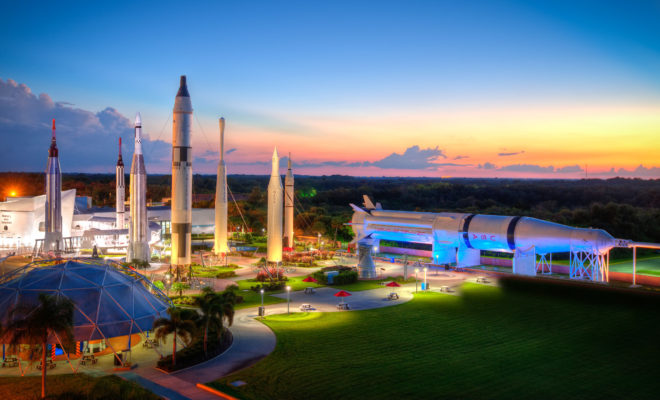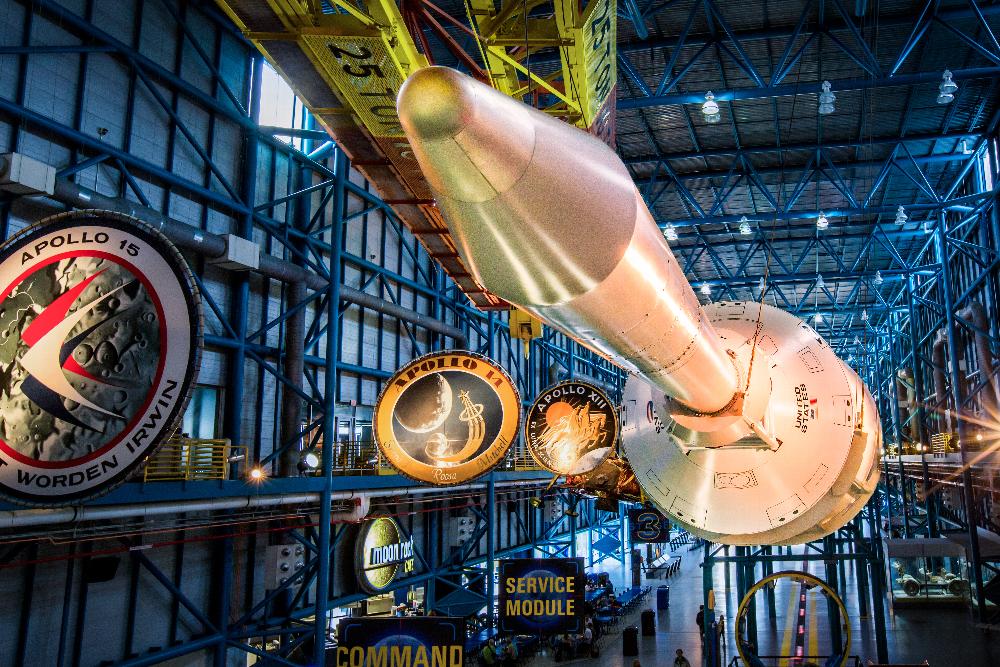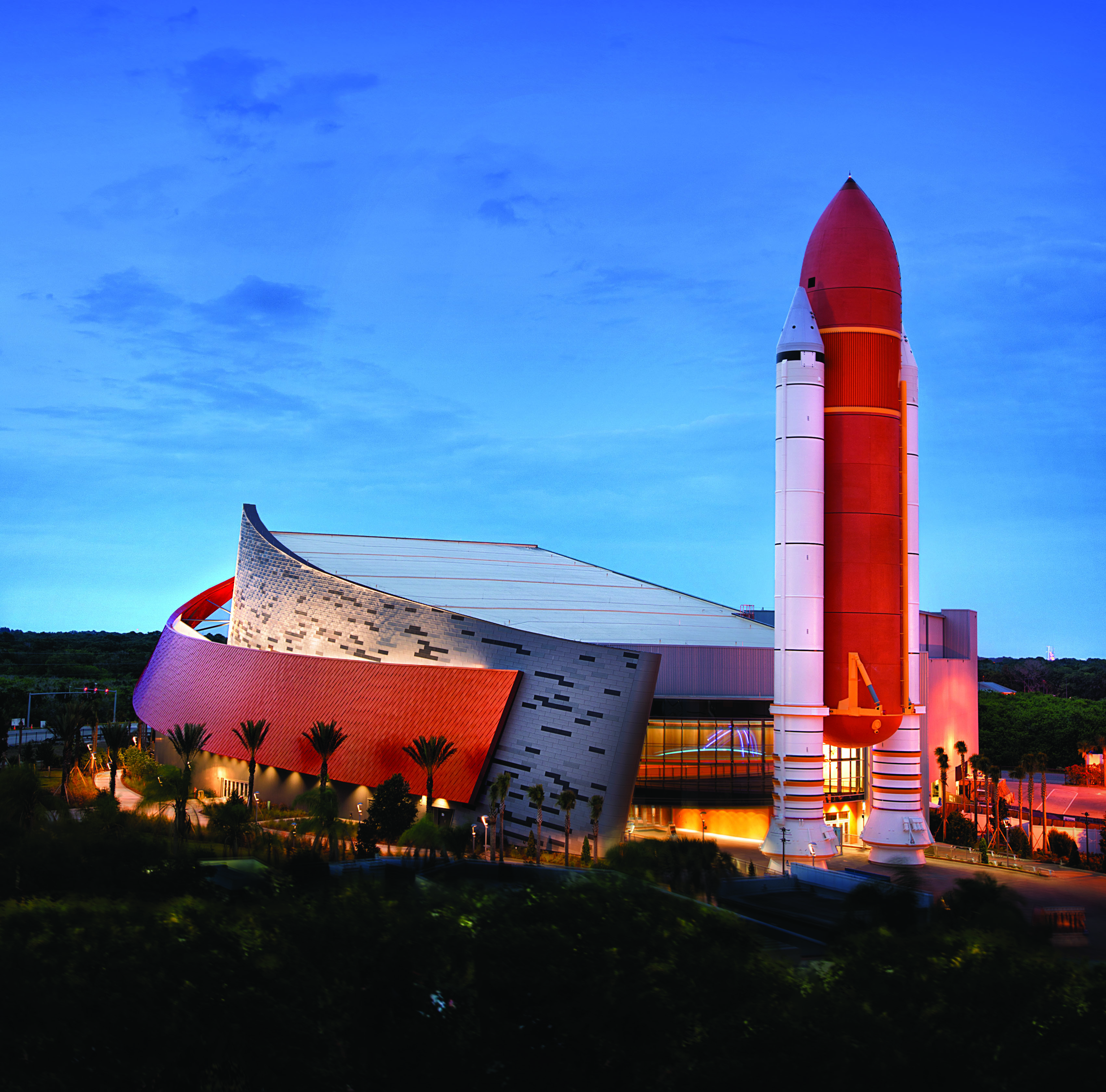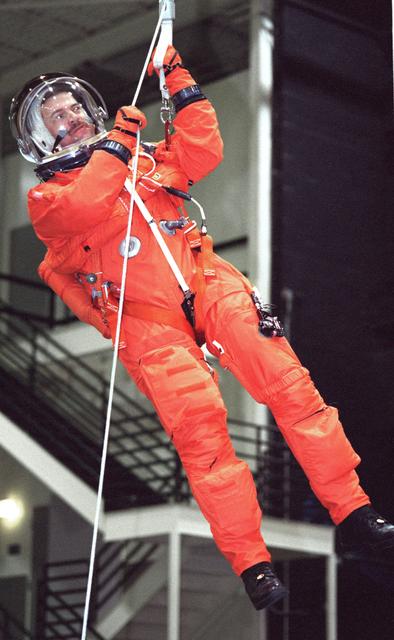
Education
Scenes From an Interview: Fly Me to the Moon
with Rebecca Shireman, Kennedy Space Center Visitor Complex
By Gus Mollasis
“Fly me to the moon
Let me play among the stars
Let me see what spring is like on
Jupiter and Mars”
Lyrics by Bart Howard
Most of us know that famous song, whether you know the most familiar renditions sung by “Old Blue Eyes” Frank Sinatra, or the version by the unforgettable Nat King Cole. Or maybe you remember the version by a “singer” at your favorite karaoke watering hole, who thinks he sounds great, as he destroys this classic song from too much confidence courtesy of too many cocktails.
Several years back at a Sarasota Film Festival opening night, I too had my chance at singing that song. The setting was perfect —the Courtyard of the fabulous Ringling Museum. And rather than going solo, I decided to do a duet. And who better to join me in singing “Fly Me to the Moon” than someone who’d actually been to the moon and back. Astronaut Dr. Edgar “Ed” Mitchell, from the Apollo 14 mission, and the sixth man to walk on the moon, obliged this writer and part-time singer with the honor. We belted out a few bars while looking up at a full moon over the Ringling Courtyard. And while I won’t tell you it was one giant leap for mankind in the music business, it meant the world to me.
Growing up, I was one of those kids who wanted to be a number of things that, through the eyes of a child, are reachable like the stars in the universe and the dreams you grasp freely as only children can. Yes, I wanted to take Al Kaline’s spot as right fielder of the Detroit Tigers. Also, a fireman saving families. A more realistic dream, but it’s hard to be a fireman with asthma. Growing up in the 60s, I listened to the words of President Kennedy, his gauntlet for dreamers and doers, and his challenge to all Americans about our space program: “We choose to go to the moon in this decade and do other things, not because they are easy, but because they are hard.” I can still hear those eloquent words as JFK shared his bold vision.
While I never got to the moon and Jack Kennedy would not live to see his dream fulfilled, we as humankind all got there together. Perhaps you are old enough to remember it as it happened. If not, there’s a good chance you’ve seen the famous footage from 1969 when Neil Armstrong placed the American flag on the moon. I was in St. Louis, Missouri, where we all watched in awe as that incredible feat happened on one small color TV.
So, as I stood in the Ringling Courtyard next to Astronaut Mitchell looking up at the moon, I was a little nervous to ask one of only twelve people to ever walk on the moon if he’d sing that great song with me. I thought wow, that’s pretty rarified air. Only twelve people have walked on the moon. Compare that with how many Presidents we’ve had (45), or how many Hall of Famers there are in Baseball (323), Football (318), Basketball (178), Hockey (392), or even in the Rock and Roll Hall of Fame (323).
What an exclusive club. Twelve people. You know what’s also a small number? 174. The Kennedy Space Center is a mere 174 miles away from Sarasota. I am embarrassed to say that this man, who as a boy dreamed of being on the moon, who sang “Fly Me to the Moon” with a famous astronaut, has never been to the Kennedy Space Center.
But that’s about to change for me.
What better time to make that short journey to explore all that Kennedy Space Center has to offer than in 2019 – the 50-year anniversary of the historic moon landing? The Center (and our nation) will be celebrating the “Year of Apollo.”
I recently had the pleasure of talking to Rebecca Shireman, the Public Relations & Communications Manager for the Kennedy Space Center Visitor Complex. Listening to her talk about the Center’s plans for visitors during the “Year of Apollo,” brought all my childhood wonder of space flooding back.
I’m already planning my trip. I’ve got a case of Tang in the cooler and some freeze-dried ice cream. Yes. 174 miles. Easy.
——————-

Shireman says the biggest part of the 2019 celebration will be with the Apollo/Saturn V Center, which is a building that’s dedicated to the Apollo missions, specifically celebrating that important moment of landing on the moon. They are updating and making it more interactive using the latest technologies. The Center also houses the Saturn V Rocket, one of only three remaining Saturn V rockets.
“We’re doing extensive work with that building and a new exhibit will be opening there hopefully in time for our July celebration of that mission,” she said. “But also, along the way, we’ll be celebrating all the other Apollo missions in some way. Earthrise, the significant moment when they took that historic photograph of the earth (the blue marble) from space, will be celebrated in December.”
Having made the pilgrimage to Disney, I asked Shireman how the Kennedy Space Center compares with other attractions in the state of Florida, especially for both children and adults.
“It is certainly a place for both children and adults. I look at it as the past, present and future of the space program, which of course encompasses NASA’s story, but now SpaceX, United Launch Alliance, Boeing, and other partners as well. It is meant to be a place where everyone makes a connection with space and creates memorable moments with their recollections of these milestones. It’s fun to watch families go through the visitor complex and see how each member connects with something different. You may have one member who, when they see the Saturn V Rocket, visibly goes back in time, remembering where they were when we landed on the moon.”
Shireman grew up in nearby Titusville and remembers watching shuttle launches. “Seeing the Space Shuttle Atlantis brings tears to my eyes every time, because that’s my connection and what I remember.”
Tears of joy. I could relate. I was a kid again, thinking of seeing that first moon landing. In my mind, I was planning my trip to the Kennedy Space Center. A subtle, comforting voice from the command center refocused my mission.
“Of course, we have future-facing things as well. So that moment when we go back to the moon and eventually get to Mars, future generations will celebrate those moments at the Visitor Complex.”
Watching launches. Experiencing history. Making lasting memories. They are all something that the Kennedy Space Center does very well. Connecting to memories and to space. Not only outer space, but to the inner space that connects us all. When I first connected with the concept of space and space exploration, naturally I wanted to be an astronaut. But at that time, there was no place, no space really to go through to see what it takes to be an astronaut.
Well that’s all changed. Too late for me, but not for today’s kids who can visit the Kennedy Space Center and partake in the Astronaut Training Experience (ATX).
“We’re excited about our latest attraction, the Astronaut Training Experience with Lockheed Martin along with its companion program Mars Base I,” Shireman excitedly shared. “You can navigate on full-motion simulators and experience what it’s like to work in space. You get to land and drive on Mars. You get to experience what micro-gravity feels like and what it’s like to work in that environment. And we also use virtual reality, so you can walk on Mars as well and also learn what future astronauts would be doing to train to go to Mars. It’s all future facing.”
According to Shireman, ATX is as hands on, realistic and as interactive an attraction as the Center’s ever had. It teaches teamwork, and it’s really one of a kind. The things that are available at the Center are not available at any other attraction or place anywhere.
I blurted out, “I wish I was a kid growing up today and experiencing all this with the eyes of a child.” Wondering, I asked her if kids today still dreamt about wanting to be astronauts.
“Absolutely. That spirit of exploration is alive in everyone and certainly in children.”
Shireman shared that through research, they have found that the first person to land on Mars is probably in elementary school right now, potentially in the 5th grade. That’s really about the time curriculum about the space program starts for most schools. The Center decided to offer free admission for 5th graders to encourage them to not only be astronauts, but to work in the space program in general as an engineer, scientist or a launch director. They are also encouraging students to get involved in the STEM Program, which focuses on science, technology, engineering and math. “Education is at thecenter of Kennedy Space Center Visitor Program as is exposing students to the opportunities and hopefully inspiring the next generation of space scientists, engineers, and astronauts,” said Shireman.
The world is big, space even bigger and the Kennedy Space Visitor Center is big enough to foster all the dreams of future explorers.
“Thanks to commercial companies, there are more activities within the Space Center Visitor Complex, it’s more ingrained in pop culture than it has been since the shuttle retired. People may have believed that Kennedy closed down and there wasn’t anything else happening, but the commercial crew program has brought it to light again and it has once again inspired a generation to be astronauts, launch directors, engineers and to work in the space program.”
“We’re alive and well and you can’t experience it any closer or any better than you can at Kennedy Space Center. There is access that you don’t have anywhere else. So, we’re really encouraging people, especially people who have never been here, who live here, to visit the Space Center and see how active it is and even meet an astronaut,” Shireman shared.
I found myself blurting out again. “Did you say meet an astronaut?”
“Every day of the year, including Christmas, the ‘astronaut of the day’ is served a buffet lunch and an astronaut comes and gives a presentation about his or her experiences as an astronaut. They’re fantastic people, all are very smart and vigorously trained; they really are the crème de la crème. They’re as diverse as the rest of us, but what I think sets them apart is the ability to work well under pressure. They don’t lose their cool. They are exposed to every pressure-filled simulation through their training that I wouldn’t wish upon my enemies, but they have the ability to perform and keep it all in check. At Lunch with an Astronaut, you can take a picture, shake hands, and participate in a question-and-answer session. They are readily available and accessible to people, which is great. People usually don’t get this kind of opportunity. It’s a wonderful ‘wow’ kind of moment, especially when you see a child looking up with awe at meeting an astronaut.”

With the recent release of films like last year’s Hidden Figures and this year’s First Man, the space program is once again front and center, taking space in the hearts and minds of Americans. And the Kennedy Space Center seems ready for the renewed interest and focus on it and space exploration.
Rebecca shared her final thoughts on this before packing up for her easy 174-mile trip to the Center. “People should go to the Kennedy Space Center because there is a lot to see and do. The past, present and future of the space program are all there, and it’s the place to learn about the bright future of the space program.”
And the future seems bright indeed.
“Those are all indicators that we have reignited—if you will—public interest in the space program and we’re ready to support it. We want to go further into space than we have been before. We want to go back to the moon. People see the value in it and want to be a part of it, whether it’s coming to see a launch, or visiting the Kennedy Space Center while wearing NASA logos on your jacket and eating your astronaut ice cream. There is definitely a sense of pride again and we want to be on the forefront of space exploration.”
“I think the greatest thing that Kennedy Space Center supplies is inspiration,” said Shireman. “Not to discredit other attractions, but those are based on fantasy and this real life. With the moon landing or the original Mercury 7 Astronauts, you forget what risk was involved. They were essentially missiles that humans were strapped on top of and they launched to space. It’s incredible to think about –the amount of risk and reward. You see that in a very real way. You can touch and connect with it and feel like you’re a part of it. And I think that’s what is really important about what the Visitor Complex does.”
In our own backyard, South Florida Museum in Bradenton is also celebrating Apollo’s 50th anniversary by hosting a new special exhibition: A New Moon Rises. This Smithsonian traveling exhibition features 49 large-scale and highly detailed photographs and video of the moon and will be on view until Jan. 13, 2019. southfloridamuseum.org
Top 10 Giant Steps for Fun-Kind when visiting the Kennedy Space Center Visitor Complex:
 10. Pick up a space rock at the world’s largest space shop, with over 15,000 square feet devoted to space memorabilia and NASA gear.
10. Pick up a space rock at the world’s largest space shop, with over 15,000 square feet devoted to space memorabilia and NASA gear.
9. Annual Pass with year-round passage to Kennedy Space Center Visitor Complex.
8. Rocket Garden, featuring eight authentic rockets from the past, including a Mercury-Atlas rocket similar to the one used to launch John Glenn into space in 1962.
7. Heroes & Legends Featuring The U.S. Astronaut Hall Of Fame®.
6. Space Shuttle Atlantis® – The world’s most comprehensive attraction devoted to the space shuttle.
5. Fifth graders nationwide receive free admission to NASA’S Kennedy Space Center Visitor Complex – explore a universe of fun for free.
4. 3D Space Films – Kennedy Space Center Visitor Complex is home to the only back-to-back IMAX® theaters in the world, showcasing two large-format 3D motion pictures on five-and-a-half-story-tall screens.
3. Visit to the Apollo/Saturn V Center with live shows and programs.
2. Astronaut Training Experience ® (ATX®): The new Astronaut Training Experience (ATX) Center Exploring with Lockheed Martin at Kennedy Space Center Visitor Complex, boasts the most high-tech, hands-on activities available at Kennedy Space Center Visitor Complex through two distinct programs: Astronaut Training Experience and Mars Base 1.
1. Lunch with an Astronaut – available daily and includes a delicious lunch, briefing, question-and-answer session and photo opportunity with a veteran NASA astronaut.
For more information, contact the Kennedy Space Center Visitor Complex 877.313.2610 or KennedySpaceCenter.com.



You must be logged in to post a comment Login